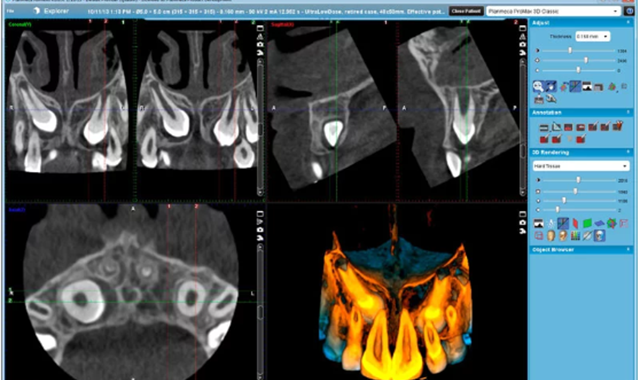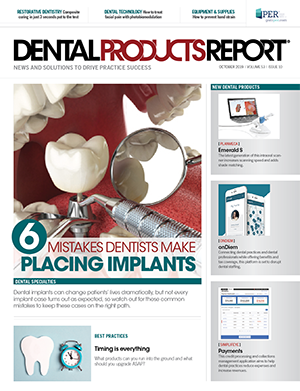Closer Look: Imaging software that drives outcomes collaboration
For one clinician, Planmeca Romexis® imaging brings magic to difficult implant and restorative cases.

Dr. Zach Evans

For Dr. Zach Evans, there is no substitute for the integrated capabilities of Planmeca Romexis imaging software. Planmeca Romexis is a modular software program reportedly offering an “all-in-one workflow” for comprehensive digital dentistry. Romexis is designed to manage 2D and 3D imaging including Smile Design and other features for advanced diagnostics. It also manages the restorative design and milling for a complete CAD/CAM solution under one platform.
Dr. Evans uses Romexis and associated Planmeca hardware at the Medical University of South Carolina, College of Dental Medicine, Department of Stomatology, where he teaches and sees patients.
Seamless workflow
“We use Romexis all the way from restorative CAD/CAM dentistry to guided implant surgery. The beautiful thing is that [Planmeca] has created software that ties everything together,” he says, describing Romexis as a single-software interface that integrates a variety of workflows.
For Dr. Evans, the benefits of integrated workflow go beyond mere efficiency. “It has the benefit of higher-quality clinical outcomes because we are not skipping steps,” he says. “For example, if I’m planning an implant case, I’m using the CAD/CAM module... I can take advantage of the power of that application and create a high-quality digital restorative design of the surgical case. That information is immediately available in the 3D imaging and implant planning module, allowing me to do virtual implant planning and implant guide design that’s completely restoratively driven.”
According to Dr. Evans, the critical element is having a high-quality diagnostic digital wax-up of the surgical case. That wax-up must consider esthetics, function, and occlusion. Most other systems do not allow a full digital wax-up, he says. Romexis allows you to do it easily within one software system.
When the ‘magic happens’
“The magic happens when things get complicated,” says Dr. Evans, specifically referring to anterior esthetic implant and restorative cases. For these, his team uses the Romexis Smile Design module. The Smile Design module allows the dentist to create a 2D model of the patient’s future smile, which drives case acceptance.
“More importantly, it gives the dentist a reference point for generating the diagnostic and restorative wax-ups needed to plan a difficult anterior esthetic case,” he says. Bringing the 2D Smile Design model into the CAD/CAM module for the 3D wax-up allows the dentist to determine how the shape, size, and position of the teeth will relate to the true facial esthetics, he explained.
Enhanced collaboration
Along with integration across the treatment planning process, cloud-based data sharing enhances real-time collaboration across specialties in different locations for complex cases.
“When I’m doing an implant case, I’m communicating with my restorative dentist,” says Dr. Evans. “[The restorative dentist can access the software] and give me feedback on the virtual restorative design that I’ve created in the CAD/CAM module.”
Its open system design and its utilization of the universal STL files format also fosters collaboration. “If I’m working with a dentist who’s referring from the outside, I can easily import or export scans and images to and from the restorative dentist, unlike some other systems,” says Dr. Evans.
